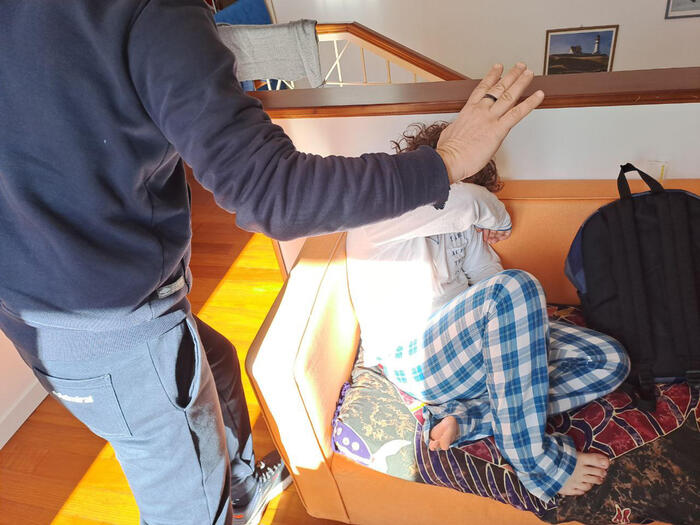- Click to share on Facebook (Opens in a new window)
- Click to share on Twitter (Opens in a new window)
- Click here to share on LinkedIn (Opens in a new window)
- Click to email a friend (Opens in a new window)
(CNN) - A 25-year-old woman entered an emergency unit in Providence, Rhode Island, complaining of widespread weakness, fatigue, shortness of breath ... and a symptom that is not seen every day.
She was turning blue. Literally.
Doctors Otis Warren and Benjamin Blackwood wrote about the case in a study published in the New England Journal of Medicine on Thursday. His patient, they wrote, seemed "cyanotic," the clinical term to look blue.
They attributed its blue color to an anesthetic agent that the woman was using, which relieves the nerve endings of the skin.
"He reported using large amounts of topical benzocaine the night before for a toothache," the co-authors wrote.
Warren, an emergency medicine doctor at Miriam Hospital in Providence, told CNN that he had only seen another "blue" patient while completing his residency. He stayed in charge of him, so he could immediately identify the woman's condition.
"It's one of those rare cases about those who teach us, for those you study, you undergo exams, but you can rarely see," he told CNN.
Red to blue
Warren diagnosed her with "acquired methemoglobinemia," a reaction caused by certain medications that prevent blood from carrying oxygen to the tissue, he said.
Oxygen-rich blood is usually associated with a bright red color. But even though the blood looks blue in patients with methemoglobinemia, oxygen levels are actually quite high, Warren said.
Blood "binds selfishly" with oxygen and does not release it to the tissue that needs it. And so, the patient looks blue.
It is appropriate that the antidote also be bright blue. Methylene blue returns a missing electron to the hemoglobin molecule that restores oxygen levels and helps release oxygen back into the tissue, he said.
"In my field, emergency medicine, if you can cure a patient with only one antidote, that's a rare thing," he said.
What caused the reaction
In the case of his patient, his reaction was caused by benzocaine, an active ingredient found in over-the-counter medications for toothache and cold sores. And although hers is a rare side effect, he warranted a warning from the Food and Drug Administration, which warned against its use in children under 2 years old, who sometimes take the medication to relieve teething pain.
Warren's patient recovered after two doses of methylene blue and one night in the hospital. But when mutated blood levels increase by 50% or more, patients can go into a coma or develop heart and brain complications due to lack of blood to the tissue. Any amount greater than 60% can cause death, he said.
Blood








